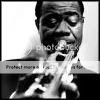- 16 Mar 2004 01:57
#320443

Here is a small list of terms I must define for my histoire class.
http://home.comcast.net/~clong180/RusRev_terms.doc
I want to do way more. I need you guys here to post as many things about the russian revolution as possible. Remember, this ends 1922, We do the rise of Stalin next. Any Battles would be great, and conditions of pre-revolution russia would also be good... ANYTHING Please...
http://home.comcast.net/~clong180/RusRev_terms.doc
I want to do way more. I need you guys here to post as many things about the russian revolution as possible. Remember, this ends 1922, We do the rise of Stalin next. Any Battles would be great, and conditions of pre-revolution russia would also be good... ANYTHING Please...











 Without looking at the list of words again (so apologies if I repeat myself)...
Without looking at the list of words again (so apologies if I repeat myself)...










 - By Rich
- By Rich